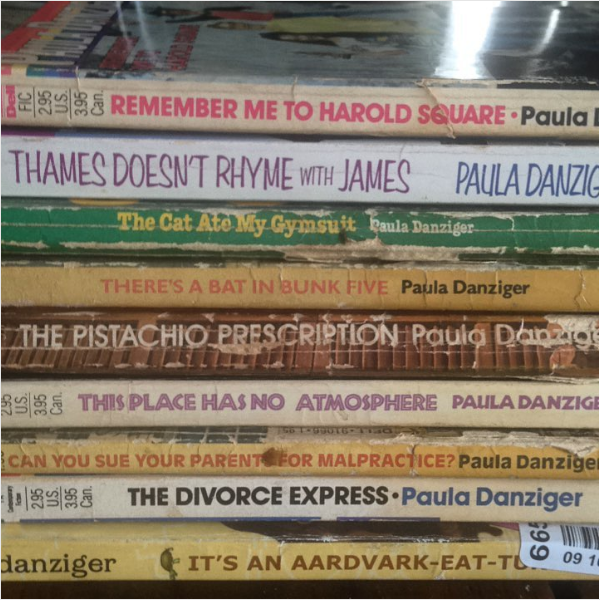
Reading Pathways: Paula Danziger
I grew up in New York. People frequently ask me where in New York, and I am never sure how to answer. I was born in Manhattan. I have fond memories of a year on Long Island. And when my parents divorced, my mom moved to Woodstock and my dad stayed primarily in Manhattan. I split my time semi-evenly, navigating the differences between city and small town, between parents, between groups of friends.
And remarkably, there were books that seemed to be written just for me: Paula Danziger also lived in Woodstock and New York City, and her early YA novels were almost all set in one or the other (with exceptions set in New Jersey and on the moon); some featured characters who, like me, split their time. What a gift, to be able to see myself so clearly in an author’s work!
Paula Danziger was a fat kid who didn’t get along with her dad, and she drew on that in her novels, but she also wrote about issues that weren’t getting as much attention then, like divorce, protesting unfairness locally and politically, kids’ rights, being biracial, sex (at least thinking about it), and dating a younger boy. After several years of writing YA, Paula switched to middle grade and chapter books, where she created her most famous character, Amber Brown (who is not a crayon). Amber’s image is etched on Paula’s tombstone; she died very young (53) of a heart attack in 2004. By not-so-remarkable coincidence, she is buried in the Artists’ Cemetery in Woodstock, the place where I spent many, many hours as an angsty teenager.
So where to start with her books? First, a caveat: I recommend going in with the expectation that her YA is much more like today’s MG, and that’s okay.



All three of these books have sequels: There’s A Bat In Bunk Five, It’s An Aardvark Eat Turtle World, and Thames Doesn’t Rhyme With James, respectively. I have to offer a trigger warning for There’s A Bat In Bunk Five, as Paula unfortunately chose to make Marcy skinny in this book—though she handled the emotional stuff with great care, she did opt to have her no longer be fat. It’s An Aardvark Eat Turtle World is told from Rosie’s perspective, which is pretty cool. And in Thames Doesn’t Rhyme With James, Kendra and Frank’s families go to London together and their parents try to make them embark on Scavenger Hunt Part Two, which doesn’t quite go as planned.

You can’t go wrong choosing a Paula Danziger novel to start with, but I hope this helps you to narrow it down. I’ll close with a few words she shared with me many years ago:












